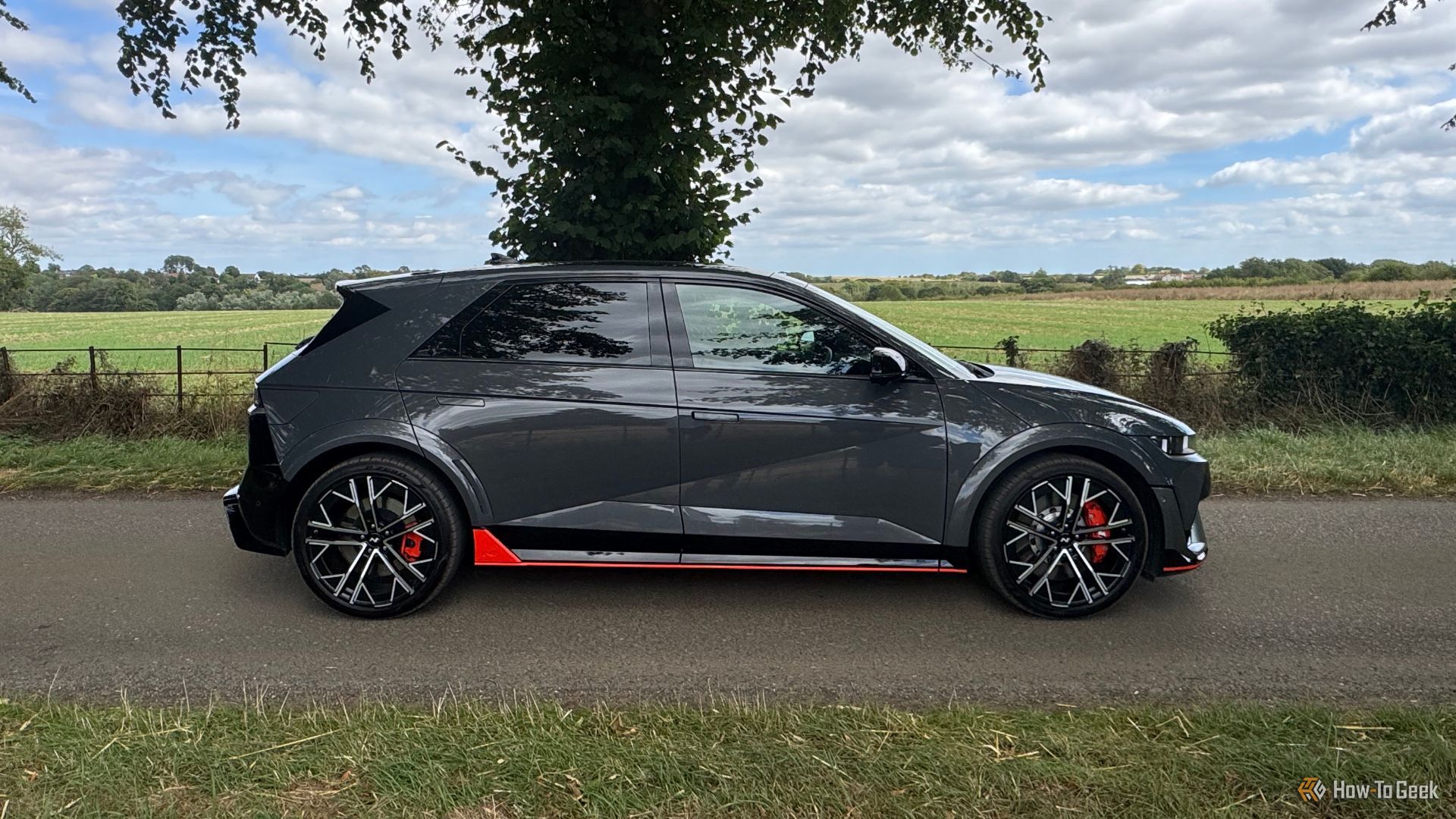Now Reading: Can This EV Win Over Die-Hard Petrolheads?
-
01
Can This EV Win Over Die-Hard Petrolheads?
Can This EV Win Over Die-Hard Petrolheads?

Speedy Summary
- Vehicle Overview: The Hyundai Ioniq 5 N, a crossover with both SUV and hatchback elements, combines retro-futuristic design with award-winning performance.
- Awards and Recognition: As Hyundai’s first all-electric N model, it has received acclaim from platforms like CarBuzz and TopSpeed. Lamborghini reportedly used it for benchmarking.
- Pricing and Features: Starts at $66,200; $1,000 extra for premium paint options. Comes standard with dual-motor AWD delivering 601 hp (increasing to 641 hp in “N Grin boost” mode), achieving 0-60 mph in approximately 3.3 seconds.
- Performance Specs: Offers practicality along with high power (601 horsepower standard) and torque (545 lb-ft). Accelerates rapidly while maintaining distinctive style.
Indian Opinion Analysis
The Hyundai Ioniq 5 N exemplifies the growing potential of electric vehicles as a viable choice to conventional internal combustion engines without compromising on performance or style. While its price tag positions it as a premium offering globally, India’s cost-sensitive EV market may perceive this model as aspirational rather than accessible. despite this affordability gap, such innovations signal progress toward the expansion of EV technology across diverse segments.
India’s push for e-mobility aligns well with innovations like these that cater to different kinds of drivers – from utilitarian needs to driving enthusiasts. For India’s emerging interest in competitive sports electric vehicles or premium segments, models such as the Ioniq 5 N might serve as benchmarks over time while encouraging local automakers to enhance domestic capabilities.
Quick Summary
- vehicle Comparisons:
– Hyundai Ioniq 5 N:
– Power: 641 HP, Torque: 545 LB-FT
– Acceleration (0-60 MPH): 3.3 seconds
– Top Speed: 161 MPH, Battery Size: 84 kWh
– Range (EPA): 221 miles, Base Price: $66,200
– Kia EV6 GT:
– Power: 641 HP, Torque: 545 LB-FT
– Acceleration (0-60 MPH): 3.4 seconds
– Top Speed: Same as Hyundai Ioniq at 161 MPH
– Slightly better range of 231 base upfront.
Quick Summary
- Model & Features: The 2025 Hyundai Ioniq 5 N is an electric vehicle (EV) with features like simulated engine sounds (N active Sound+) and a fake multi-speed gearbox (N e-shift) for enthusiasts.
- Drift Mode: Includes Torque Kick Drift function and N Drift Optimizer, making drifting accessible even for non-experts.
- Performance Specs: Comes equipped with an electronic limited-slip differential, adaptive dampers to reduce body roll, powerful brakes from Hyundai, and specially designed Pirelli EV tires. It’s noted for impressive lap records at Nürburgring.
- design Ideology: Developed under the guidance of Albert Biermann, former head of BMW’s M division. Aims to deliver daily practicality paired with high-performance driving enjoyment.
Indian Opinion Analysis
India’s burgeoning EV market might find inspiration in performance-oriented offerings like the Hyundai Ioniq 5 N. While most EV manufacturers are targeting mass adoption with affordable and efficient options tailored for dense urban areas, such niche high-performance vehicles could serve as aspirational models that redefine consumer perceptions of what EVs can achieve. However, challenges such as higher import duties on developed vehicles and the need for compatible infrastructure limit the immediate market feasibility in India but hold potential as a technology demonstrator or status symbol among enthusiasts.
Link: Full Article
Quick Summary
- Model Overview: The 2025 Hyundai Ioniq 5 N combines high-performance features with the practicality of an electric vehicle (EV).Unlike the standard Ioniq 5, which focuses on comfort, this model is tailored for track-ready performance.
- Interior Features:
– Retains spacious cabin and smart storage solutions.
– Replaces lounge-like front seats with supportive buckets.
– Swaps bright white interiors for a sporty black theme but retains amenities like a Bose sound system and powered tailgate.
- Performance & Technology:
– Aggressive front grille aids in cooling battery and motors alongside its liquid cooling system.
– Features “N Race” drive modes:
– Endurance Mode: Manages heat by reducing power output.
– Sprint Mode: Provides short bursts of high power.
- Battery specs:
– equipped with an upgraded 84-kWh battery offering quick charging through an advanced 800-volt architecture (up to 350 kW DC fast charging).
– Includes Vehicle-to-Load (V2L) capability, turning the car into a mobile power source.
- Positioning: Aimed at challenging perceptions that EVs are dull, balancing driving excitement with environmental consciousness.
!Ioniq Interior
Adam Gray | How-To Geek
!Exterior Detail
Adam Gray | How-To Geek
!Rear Angle Shot
Adam Gray | How-To Geek
Indian opinion Analysis
the introduction of models like the Hyundai Ioniq 5 N marks a significant step forward in redefining perceptions around EVs as more than just eco-friendly options but also sources of thrilling experiences. For India, where EV adoption is gradually gaining momentum due to government policies and increasing infrastructure development for charging stations, such innovations could help expand consumer interest by targeting both environmentalists and auto enthusiasts alike.
India’s focus on electrifying its automotive sector includes incentives under schemes such as FAME-II. High-performance vehicles can inspire domestic manufacturers to innovate further across both utility-focused and aspirational categories. However, practical barriers like cost parity between luxury EVs versus fuel-based alternatives remain significant hurdles in India’s market. Additionally,performance-oriented EV imports could influence urban premium buyers but are unlikely to have broad societal impacts in their current form until localized adaptations occur systematically.
By blending sustainability with automotive pleasure via clever tech frameworks capable they create psychological bridges




























